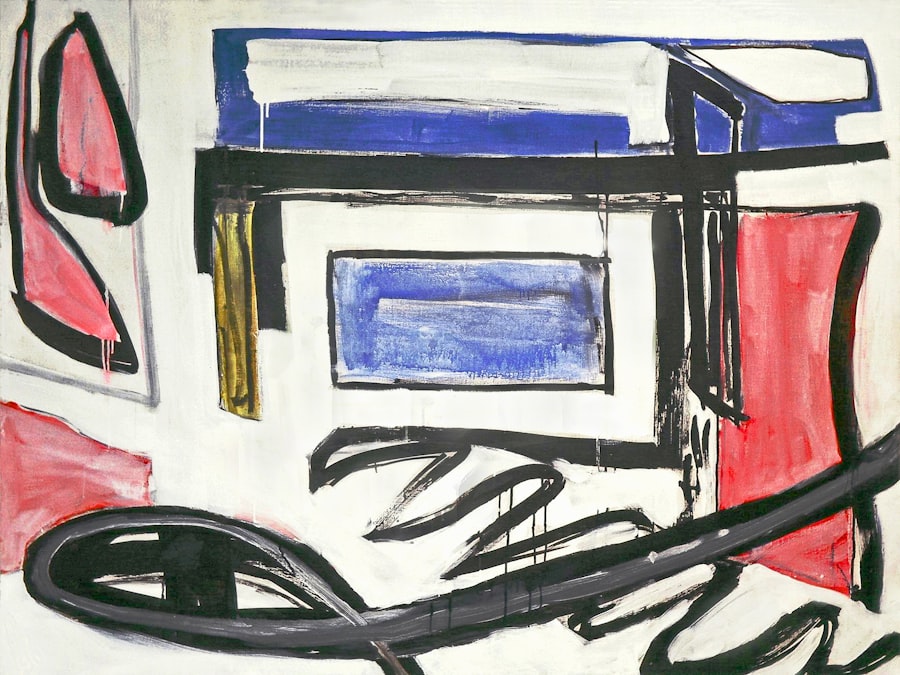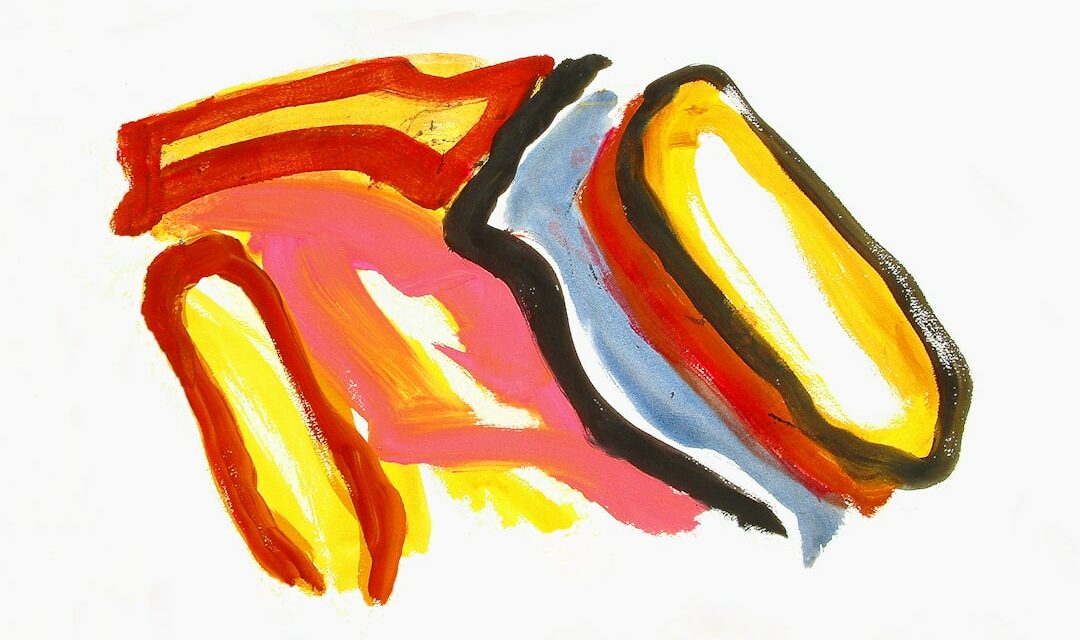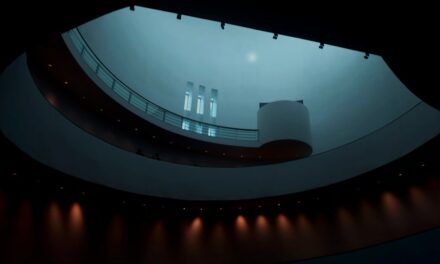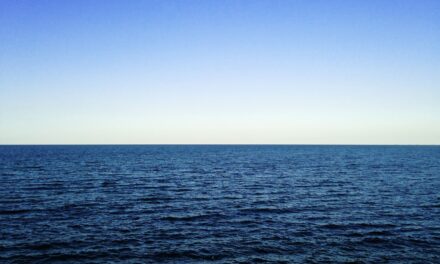Wassily Kandinsky was born on 16 December 1866 in Moscow, Russia. He was raised in an affluent family and demonstrated an early aptitude for art and music. His parents supported his artistic inclinations, and he commenced drawing lessons at a young age.
Upon completing his secondary education, Kandinsky matriculated at the University of Moscow to read law and economics. However, his enthusiasm for art prompted him to transfer to the Moscow School of Painting, Sculpture, and Architecture, where he studied under the tutelage of the esteemed artist Anton Azbe. Kandinsky’s early works were influenced by Russian folk art, fairy tales, and the Symbolist movement.
He was particularly intrigued by the utilisation of colour and form to convey emotion and spirituality. In 1896, Kandinsky travelled to Munich, Germany, where he continued his artistic education at the Academy of Fine Arts. During this period, he began to experiment with abstract forms and non-representational art, establishing the foundation for his future artistic style.
Summary
- Early Life and Education:
- Born in London in 1898, attended art school in his youth
- Artistic Style and Influences:
- Influenced by Cubism and Futurism, known for geometric shapes and bold colours
- The Bauhaus Years:
- Studied and taught at the Bauhaus school in Germany, where he developed his iconic style
- Travels and Inspirations:
- Travelled to the United States and South America, drawing inspiration from indigenous art and culture
- Later Years and Legacy:
- Settled in the United States, continued to influence modern art until his death in 1976
- Notable Works and Exhibitions:
- Notable works include “Composition VIII” and “Yellow-Red-Blue”, exhibited in major galleries worldwide
- Impact on Modern Art:
- Considered a pioneer of abstract art, his influence can be seen in the work of many contemporary artists
Artistic Style and Influences
Inspirations and Influences
Kandinsky was particularly inspired by the work of composer Richard Wagner and believed that painting could be a visual equivalent to music, with colour and form creating a sense of harmony and rhythm.
Early Works and Characteristics
Kandinsky’s early works were characterised by bold colours, dynamic shapes, and a sense of movement. He often used geometric forms and abstracted figures to convey his inner emotions and spiritual beliefs. Kandinsky’s use of colour was particularly innovative, as he believed that different hues could evoke specific emotions and spiritual states.
Legacy and Impact
His theories on colour and form would later become foundational principles of the abstract art movement.
The Bauhaus Years

In 1922, Kandinsky was invited to join the faculty of the Bauhaus, a renowned art school in Weimar, Germany. The Bauhaus was known for its innovative approach to art education, combining fine arts, crafts, and design into a cohesive curriculum. Kandinsky’s time at the Bauhaus was highly productive, and he played a key role in shaping the school’s approach to abstract art.
During his tenure at the Bauhaus, Kandinsky continued to develop his theories on colour and form, teaching courses on colour theory and abstract painting. He also collaborated with other faculty members, including Paul Klee and László Moholy-Nagy, to create new approaches to art education. Kandinsky’s influence at the Bauhaus extended beyond the classroom, as he also contributed to the design of the school’s buildings and furniture.
Travels and Inspirations
Throughout his career, Kandinsky travelled extensively, drawing inspiration from diverse cultures and artistic traditions. In 1909, he travelled to Paris, where he was exposed to the work of the Fauvist and Cubist movements. This experience had a profound impact on Kandinsky’s artistic style, leading him to further explore non-representational forms and bold colours in his work.
Kandinsky’s travels also took him to Tunisia, where he was captivated by the vibrant colours and geometric patterns of North African art. This experience further influenced his use of colour and form in his paintings, as he sought to capture the spiritual essence of the natural world. Kandinsky’s travels to Russia and Spain also left a lasting impression on his work, as he incorporated elements of folk art and religious iconography into his abstract compositions.
Later Years and Legacy
In 1933, Kandinsky left Germany due to the rise of the Nazi regime and moved to France with his wife, Nina. Despite the challenges of living in exile, Kandinsky continued to produce innovative works and exhibit internationally. His later paintings were characterised by a more lyrical and organic style, as he explored themes of biomorphism and nature.
Kandinsky’s legacy as a pioneer of abstract art is undeniable, as his theories on colour and form continue to influence artists to this day. His writings on art theory, including “Concerning the Spiritual in Art” and “Point and Line to Plane,” have become foundational texts for understanding abstract art. Kandinsky’s impact on modern art can be seen in the work of artists such as Jackson Pollock, Mark Rothko, and Piet Mondrian, who were inspired by his revolutionary approach to painting.
Notable Works and Exhibitions

Global Recognition
Kandinsky’s work has been exhibited in major museums around the world, including the Guggenheim Museum in New York, the Tate Modern in London, and the Centre Pompidou in Paris. His influence on modern art is also evident in the numerous exhibitions dedicated to his work.
Retrospectives and Legacy
Retrospectives of his paintings have been held at prestigious institutions such as the Solomon R. Guggenheim Museum in New York and the Musée National d’Art Moderne in Paris. These exhibitions have helped to cement Kandinsky’s reputation as a pioneering figure in the development of abstract art.
Enduring Influence
Kandinsky’s work continues to inspire artists and art lovers alike, solidifying his position as a true innovator in the world of modern art.
Impact on Modern Art
Kandinsky’s impact on modern art extends beyond his own paintings, as he played a key role in shaping the development of abstract art as a whole. His emphasis on the spiritual and emotional power of colour and form paved the way for future generations of artists to explore new modes of expression. Kandinsky’s belief that art could transcend the material world continues to inspire contemporary artists who seek to create works that resonate on a deeper level.
In addition to his influence on individual artists, Kandinsky’s legacy can be seen in the evolution of art education and museum practices. His time at the Bauhaus helped to establish abstract art as a legitimate form of artistic expression, leading to its integration into mainstream art education curricula. Kandinsky’s writings on art theory have also had a lasting impact on museum exhibitions, as curators seek to contextualise abstract art within a broader cultural and spiritual framework.
In conclusion, Wassily Kandinsky’s contributions to modern art are immeasurable. His innovative approach to abstract painting, coupled with his theories on colour and form, have left an indelible mark on the art world. Kandinsky’s legacy continues to inspire artists, educators, and museum professionals alike, ensuring that his revolutionary vision will endure for generations to come.
If you are interested in learning more about the different art movements that have influenced Paul Klee’s work, you may want to check out this article on Post-Impressionism. Post-Impressionism was a movement that emerged in the late 19th century and had a significant impact on the development of modern art. Artists like Vincent van Gogh and Paul Cézanne were key figures in this movement, and their innovative use of colour and form had a lasting influence on Klee’s artistic style. To read more about Post-Impressionism, click here.
FAQs
Who is Paul Klee?
Paul Klee was a Swiss-German artist known for his unique style that combined elements of expressionism, cubism, and surrealism. He was also a teacher at the Bauhaus school of art and design.
When was Paul Klee born?
Paul Klee was born on December 18, 1879, in Münchenbuchsee, Switzerland.
What is Paul Klee known for?
Paul Klee is known for his highly individual style of art, which often incorporated abstract elements, geometric shapes, and vibrant colors. He was also known for his use of symbols and metaphors in his work.
What is the Bauhaus school of art and design?
The Bauhaus school of art and design was a renowned art school in Germany that operated from 1919 to 1933. It was known for its approach to teaching art, which emphasized the integration of fine arts, crafts, and technology.
What influenced Paul Klee’s art?
Paul Klee’s art was influenced by a variety of sources, including his travels to North Africa and his interest in music and poetry. He was also influenced by the work of other artists, such as Wassily Kandinsky and Pablo Picasso.
What is Paul Klee’s most famous painting?
One of Paul Klee’s most famous paintings is “Senecio,” which he painted in 1922. The painting features a stylized portrait of a man with geometric shapes and bold colors.
What is the significance of Paul Klee’s work?
Paul Klee’s work is significant for its innovative approach to art and its influence on modern art movements. His use of abstract forms and symbols has had a lasting impact on the art world.




